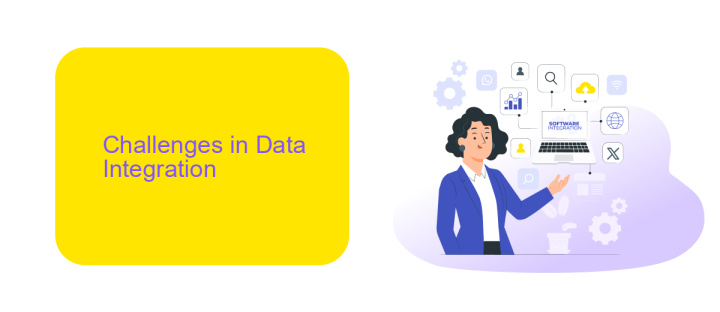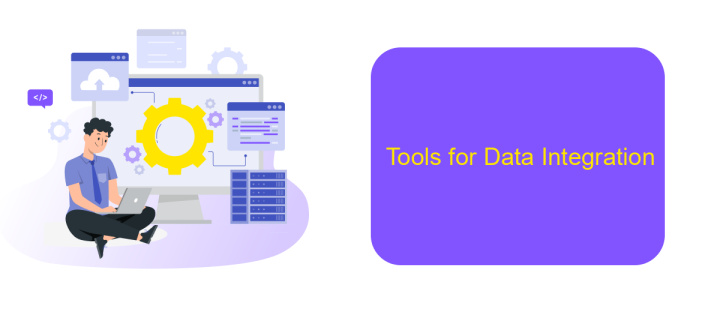Data Integration Process
Data integration is a crucial process in modern data management, enabling organizations to consolidate information from various sources into a unified view. This process not only enhances data accuracy and accessibility but also supports informed decision-making. In this article, we will explore the key steps and methodologies involved in the data integration process, highlighting its significance in today's data-driven world.
Introduction
Data integration is a crucial process for organizations aiming to consolidate information from various sources into a unified view. This process not only enhances data accessibility but also improves decision-making by providing a comprehensive picture of the business landscape. Effective data integration involves combining data from different databases, applications, and systems to ensure that all relevant information is available in one place.
- Combining data from multiple sources
- Ensuring data consistency and accuracy
- Improving data accessibility and usability
- Facilitating better decision-making
One of the effective tools for setting up seamless data integrations is ApiX-Drive. This service allows users to automate data transfer between different applications and systems, significantly reducing the time and effort required for manual data handling. By leveraging ApiX-Drive, organizations can streamline their data integration processes, ensuring that all critical data is synchronized and accessible in real-time.
Challenges in Data Integration

Data integration presents several challenges, primarily concerning data quality and consistency. When data is sourced from multiple systems, ensuring uniformity in data formats and eliminating duplicates becomes a significant hurdle. Inconsistent data can lead to errors and misinformed decisions, making it crucial to establish robust data validation and cleansing processes. Additionally, managing large volumes of data from disparate sources can strain resources and complicate the integration process.
Another major challenge is the technical complexity involved in setting up and maintaining integrations. This often requires specialized skills and can be time-consuming. Tools like ApiX-Drive can simplify this process by providing user-friendly interfaces and pre-built connectors for various applications, reducing the need for extensive coding. However, even with such tools, ensuring seamless integration and real-time data synchronization remains a complex task, often necessitating continuous monitoring and adjustments to adapt to changing data landscapes.
Data Integration Process

Data integration is a crucial process for businesses aiming to consolidate information from various sources into a unified view. This process ensures that data from disparate systems can be combined, analyzed, and utilized effectively to drive informed decision-making and operational efficiency.
- Identify Data Sources: Determine the various databases, applications, and data streams that need to be integrated.
- Data Extraction: Extract the required data from these sources, ensuring it is accurate and up-to-date.
- Data Transformation: Convert the extracted data into a consistent format that can be easily combined and analyzed.
- Data Loading: Load the transformed data into a central repository, such as a data warehouse or data lake.
- Data Synchronization: Continuously update the integrated data to reflect any changes in the source systems.
- Data Quality Management: Regularly monitor and clean the data to maintain its accuracy and reliability.
Using tools like ApiX-Drive can significantly streamline the data integration process. ApiX-Drive offers automated data transfer between various platforms, reducing manual effort and minimizing errors. By leveraging such services, businesses can ensure seamless and efficient data integration, leading to better insights and improved performance.
Tools for Data Integration

Effective data integration requires the right set of tools to ensure seamless connectivity and data flow between various systems. These tools help in aggregating data from multiple sources, transforming it into a consistent format, and loading it into a target system. Selecting the appropriate tools can significantly streamline the data integration process, making it more efficient and less error-prone.
One such tool is ApiX-Drive, which provides a user-friendly interface for setting up integrations without the need for extensive coding knowledge. It allows businesses to connect different applications and automate data transfers, thus saving time and reducing the risk of manual errors. ApiX-Drive supports a wide range of applications and offers various customization options to fit specific business needs.
- ETL (Extract, Transform, Load) Tools
- Data Integration Platforms
- API Management Tools
- Cloud-based Integration Services
- Data Warehousing Solutions
By leveraging these tools, organizations can ensure that their data is accurate, up-to-date, and readily available for analysis. This not only enhances decision-making processes but also improves overall operational efficiency. Choosing the right data integration tools is crucial for maintaining data integrity and achieving business goals.
- Automate the work of an online store or landing
- Empower through integration
- Don't spend money on programmers and integrators
- Save time by automating routine tasks
Best Practices for Data Integration
Effective data integration requires careful planning and execution. Begin by defining clear objectives and understanding the data sources involved. Ensure that the data is clean, consistent, and well-documented. Establish robust data governance policies to maintain data quality and integrity throughout the integration process. Regularly monitor and audit data flows to identify and address any discrepancies or issues promptly.
Utilize advanced integration tools to streamline the process. For instance, ApiX-Drive offers a user-friendly platform to automate data integration across various applications and services without requiring extensive coding knowledge. Leverage such tools to reduce manual effort and minimize errors. Additionally, ensure that your integration solutions are scalable to accommodate future growth and evolving data needs. Always prioritize data security by implementing encryption and access controls to protect sensitive information.
FAQ
What is Data Integration?
Why is Data Integration important?
What are the common challenges in Data Integration?
How can I automate the Data Integration process?
What are the benefits of using automated Data Integration tools?
Strive to take your business to the next level, achieve your goals faster and more efficiently? Apix-Drive is your reliable assistant for these tasks. An online service and application connector will help you automate key business processes and get rid of the routine. You and your employees will free up time for important core tasks. Try Apix-Drive features for free to see the effectiveness of the online connector for yourself.


